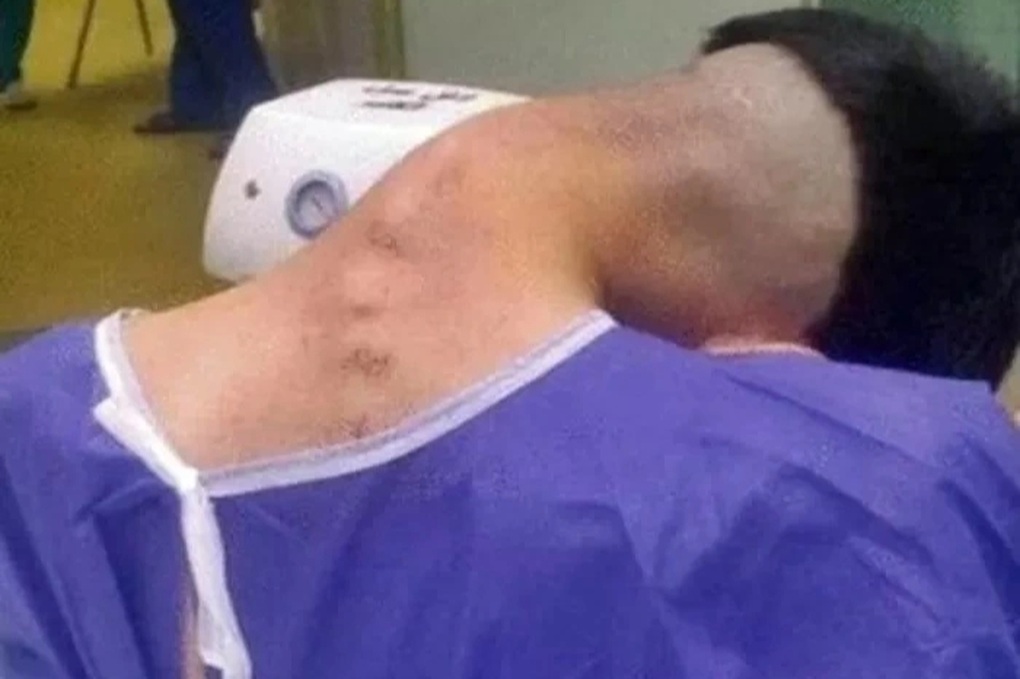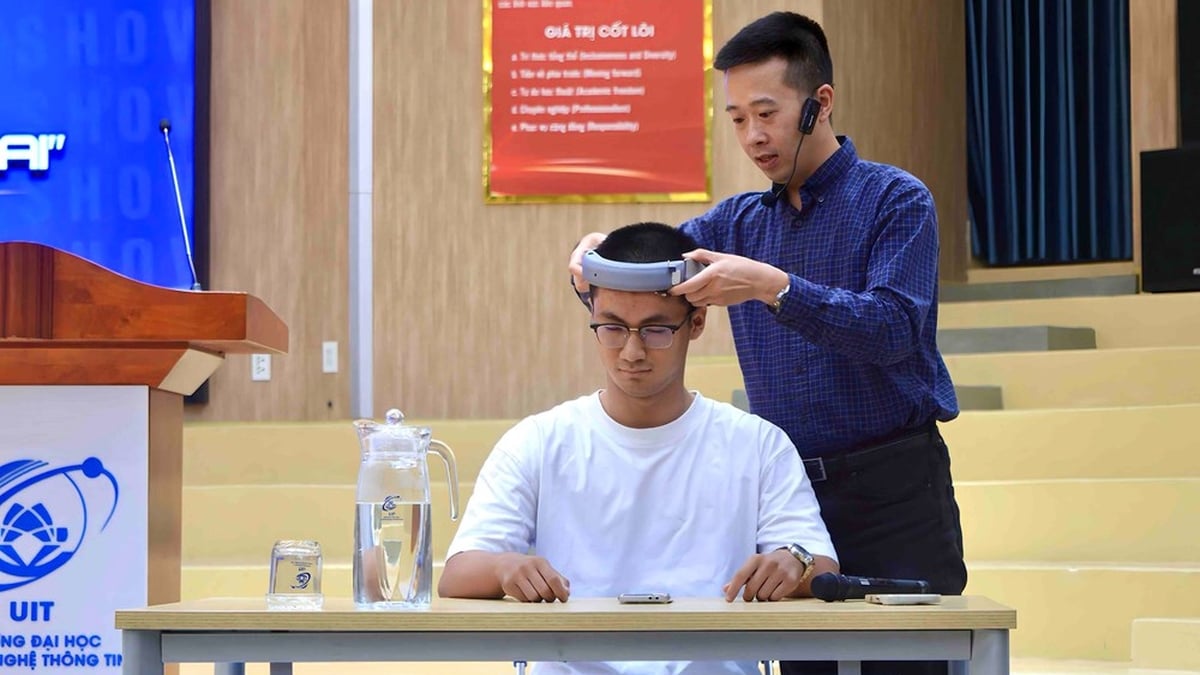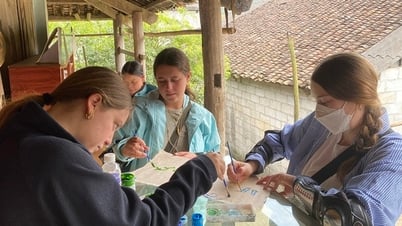Doctors at Isfahan University of Medical Sciences (Iran) recently announced a unique medical case: A 23-year-old man was diagnosed with cervical kyphoscoliokyphosis (CKS) - also known as "dropped head syndrome" - after years of using addictive substances. This is the first time the medical community has recorded a link between stimulant abuse and this serious syndrome.
Strange syndrome causes head to bow nearly 90 degrees
CKS is a rare neuromuscular disorder characterized by severe weakness of the neck muscles. The patient cannot hold the head in an upright position, but is always bent down, often forming an angle of nearly 90 degrees to the spine.

23-year-old man suffers from "dropped head syndrome" after long-term substance abuse (Photo: Asian Spine Journal).
Previously, CKS usually only appeared in patients with neuromuscular diseases such as Parkinson's disease, Charcot-Marie-Tooth disease or in congenital malformations.
However, what caught the attention of experts was that the 23-year-old patient had no clear history of neurological or genetic disease. Instead, the cause of the disease came from a rare factor: the habit of keeping the head bowed for a long time after each drug use.
Unexpected cause
The patient, who lives in Iran, has a difficult economic situation and has experienced severe depression. For many years, he abused heroin, opium and especially amphetamine - a powerful stimulant that often causes temporary euphoria.
According to the patient himself and his relatives, after each time using amphetamine, he often fell into a prolonged passive state, sitting still with his head bowed.
This condition repeated over several months, gradually deforming the cervical vertebrae. CT scans showed severe scoliosis of the C3, C4, and C5 vertebrae, although the cranial nerves and muscles still functioned normally.
Before coming to the hospital, the patient had tried many treatments, from medication to physical therapy, but there was no improvement.
"He could not lift his head to look straight. His head was always drooping as if there was no force holding it up," the report from the team of doctors described.
The patient had to go through 3 stages of surgery.
Given the severity of the case, doctors decided to perform a multi-hour cervical spine surgery. The intervention was divided into three stages: removal of deformed bone, correction of the cervical axis, and fixation with a spinal brace.
The surgery was successful. The next day, the patient was able to stand up and walk with the help of a neck brace. After three days of observation, he was discharged and transferred to a psychiatric treatment program for drug addiction. One year later, the cervical spine condition stabilized, with no relapse, and the patient was also successfully detoxified.
In a report published in the Asian Spine Journal, a team of doctors at Isfahan University of Medical Sciences said this was the first case in the world to record CKS arising from repetitive behavior when using stimulants.
The drug does not directly deform bones, but the abnormal behavioral states it causes — such as holding unnatural positions for hours — silently destroy the musculoskeletal system.
The case of the young patient is a reminder not only of the harmful effects of addictive substances on the nervous system, but also of less-noticed consequences such as musculoskeletal and postural damage.
"We often emphasize only the psychological or neurological effects of drugs, but this is clear evidence that the behaviors that accompany addiction can also have serious physical consequences," the group of doctors said.
This case also opens up a new research direction on the relationship between neuro-musculoskeletal-behavioral disorders, especially in the group of drug addicts, which is increasing in many countries.
Source: https://dantri.com.vn/khoa-hoc/nam-thanh-nien-mac-hoi-chung-dau-guc-do-lam-dung-chat-gay-nghien-20250507064511491.htm



































































































Comment (0)